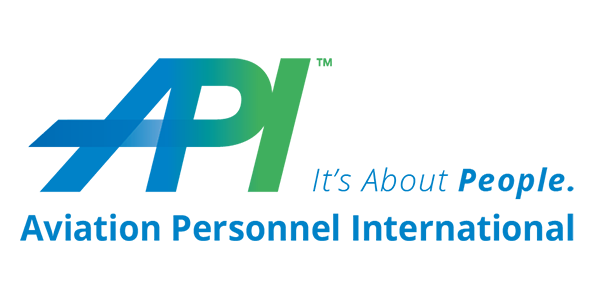Does your flight department participate in an “employee onboarding” program? A way to assimilate a new hire into your aviation organization?
If not, I highly recommend nominating someone to take charge and create such a program. After all, onboarding is the perfect way to integrate new employees so they can “hit the ground running.” In doing so, you’ll shorten the learning curve with as little disruption to the flow of work as possible.
Onboarding is a fundamental platform for new hires. It offers them a view of what it’s really like to work somewhere. And it provides them with critical information about whether or not they made the right decision to accept a job.
Since writing my first article on onboarding, recent data illustrate how important it has become to the overall hiring process. According to the process management firm and website process.st:
- Onboarding programs can increase retention by 25 percent, and improve employee performance by 11 percent.
- Employees who participate in a structured onboarding program are 69 percent more likely to stay with an organization for three years.
- It takes 8-12 months for new hires to be as proficient as their tenured colleagues.
- 15 percent of employees said the lack of an effective onboarding program was a factor in their decision to quit.
It’s no surprise that new employees want to get up to speed as quickly as possible. And they also want to understand the values, norms and culture of your organization so they can integrate themselves into your flight department.
So, on the hiring manager’s part, it’s vitally important to use this time to outline the requirements of their role. Help them reduce their uncertainty and ensure that their work is more meaningful in the context of the company’s overall mission.
The Four C’s of Employee Onboarding
A successful onboarding plan helps you, the hiring manager, fully identify and understand what your new hire requires to blend in. Everyone is different, after all, and one new employee’s needs can differ substantially from another’s.
But there are some fundamentals that everyone will benefit by. And, luckily, we have some excellent research on what those elements consist of.
Talya N. Bauer, a Management professor at Portland State University, refers to an onboarding plan’s needs as “The Four C’s.” They include:
- Compliance—This is a download of the most basic aspects of an employee’s job. It includes essential company rules, policies and legal procedures. Add to that dress code, scheduling procedures and government policies that, in our case, might affect someone working in the aviation field.
- Clarification—This essentially is a specific breakdown of employees’ job requirements. Clarification lets employees know exactly what is expected of them. You should also include in this process an org chart or summary of your company’s structure, letting them know who is in charge of what and to whom they and others will be reporting.
- Culture—You absolutely want to give your new hires a sense of what your company as well as your flight department culture is like. What are the official—and unofficial—norms of the workplace? What are the unspoken tips to help them thrive? How is work ethic valued? What kind of leadership can your new hires expect from their supervisors?
- Connection—Networking is key to getting ahead in life. So new hires need to be able to network with other employees for information and cooperation. But more than that, your new hires need to be able to connect with others. They need to form relationships so they’ll want to show up for work every day.
“Timing” is of the Essence
One critically important factor that many human resources professionals now emphasize is “timing.” The time to begin onboarding, they say, isn’t when your employee is already on board. Rather, it’s during the recruitment phase itself.
“Look at recruiting as the widest end of an onboarding funnel,” notes Shrad Rao, a market professional for Wagepoint. “Your aim is to hire someone who can meet all the job requirements, who will be an asset to your company, and who will stay with your company for a good amount of time. Get them involved with the culture of the company early, before they ever walk through the door.”
In my original post on this topic, I shared seven things to consider when designing and implementing a workable onboarding program. These should be done before the new hire starts. They include:
- Get Prepared
- Determine Key Stakeholders
- Align Policies, Procedures and Expectations
- Understand “Training” Versus “Development”
- Engage the Spouse/Partner
- Assign Mentors
- Communicate, Communicate, Communicate
I’m happy to report that, in my view, those topics are still as relevant today as they were then.
Use Your Team!
When you’re onboarding a new employee and trying to immerse them in the business, culture and “ethos” of your company, remember that it’s not all on you.
Engage your team of seasoned employees! They are your assets in communicating a lot of what your new hire will need to know about your practices.
One HR professional says that setting up a “paired programming” meeting each morning of a newly hired employees first week or two can be extremely helpful. It’s a sort of unofficial “mentoring” meeting that can be as easy and informal as a coffee get-together.
Remember, training and professional checklists aside, a lot of what your new employee will want to know might seem like an afterthought to you: “Is there food available in the breakroom?” or “Can I dress down on Friday?” might seem inconsequential, but they’re important bits of information that will help new hires get acclimated to your environment that much more quickly.
Personally, I’m a big fan of utilizing an onboarding “manual,” a template that can be custom-tailored to every new hire. I like to include in it checklists that cover everything from how to work with HR and get on the shared drive to how to use a new phone.
Does your team have a dress code/uniform or approved “logo wear?” Do you like new hires to be named on the NBAA member directory? And is it okay for them to update their job title and company on their LinkedIn profile?
Before day one, who will order the new hire a computer, phone, business cards, a name badge for events, and/or or a name plate for their desk or for the airplane?
Make it Work!
With the foregoing, I realize I’ve really only touched on just a smattering of onboarding-related information. There’s a wealth of material out there to help you implement the best, most effective onboarding program for your new hires.
The key is to tinker with it and fine-tune it to make sure it’s working well for your business, your organization, your culture . . . and most of all, your new employee.
Your Turn
Do you have a specific experience—positive or negative—with an onboarding “lesson learned” that you can share with us? If so, we’d love to hear from you in the comments section below.

